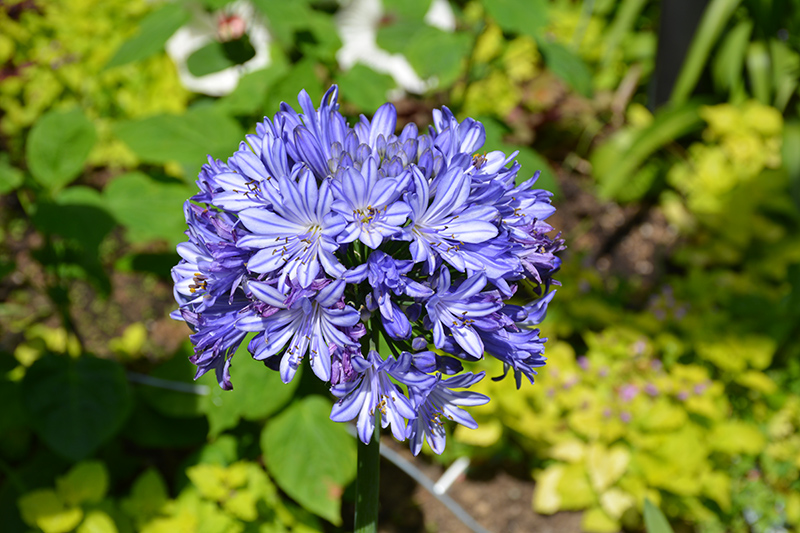Melbourne Agapanthus
Description
This variety produces a mound of luxurious narrow green foliage; stunning white flowers with lilac stripes emerge from purple buds in mid-summer, on towering, sturdy stems; a perfect accent planting in the garden or massed along borders
Landscape Attributes
Melbourne Agapanthus is an herbaceous annual with a rigidly upright and towering form. Its medium texture blends into the garden, but can always be balanced by a couple of finer or coarser plants for an effective composition.
Melbourne Agapanthus is recommended for the following landscape applications;
Planting & Growing
Melbourne Agapanthus will grow to be about 24 inches tall at maturity extending to 3 feet tall with the flowers, with a spread of 18 inches. Although it's not a true annual, this plant can be expected to behave as an annual in our climate if left outdoors over the winter, usually needing replacement the following year. As such, gardeners should take into consideration that it will perform differently than it would in its native habitat.
This plant does best in full sun to partial shade. It prefers to grow in average to moist conditions, and shouldn't be allowed to dry out. It is not particular as to soil type or pH. It is somewhat tolerant of urban pollution. This particular variety is an interspecific hybrid. It can be propagated by division; however, as a cultivated variety, be aware that it may be subject to certain restrictions or prohibitions on propagation.
Melbourne Agapanthus is a fine choice for the garden, but it is also a good selection for planting in outdoor pots and containers. With its upright habit of growth, it is best suited for use as a 'thriller' in the 'spiller-thriller-filler' container combination; plant it near the center of the pot, surrounded by smaller plants and those that spill over the edges. It is even sizeable enough that it can be grown alone in a suitable container. Note that when growing plants in outdoor containers and baskets, they may require more frequent waterings than they would in the yard or garden.

